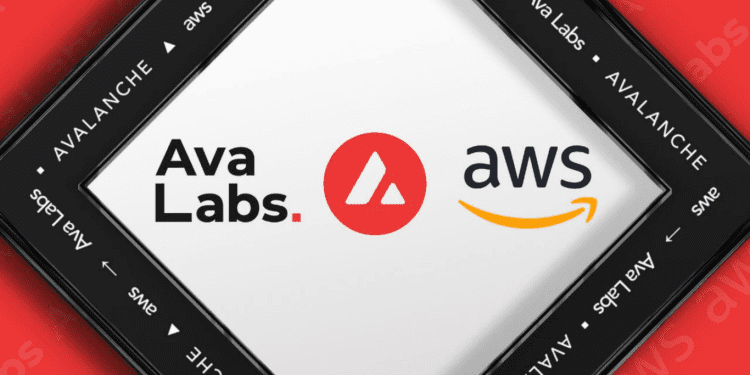Amazon Web Services (AWS) is a cloud computing platform that provides a wide range of services, including hosting and computing services. AWS offers a range of tools and services to help customers build, deploy, and manage applications, making it an ideal platform for both large enterprises and start-ups. Several blockchains, including Ethereum and many others, have been using AWS to power their networks. However, with this partnership, Ava Lab’s eco-friendly protocol, Avalanche, becomes the first Blockchain to form a partnership with the cloud-computing platform giant.
Avalanche started a new era for blockchains with near-instant transaction finality. With over 500 decentralized applications (DApps) built on top of the Avalanche, Ava Labs addresses three challenges in the blockchain space: flexibility, adaptability, and scalability. The partnership with AWS will support Ava Labs’ serverless architecture and help bring Blockchain to a broader audience.
Ava labs president, John Wu, outlines the importance of this partnership as a critical step for blockchain adoption by saying,
“AWS is so valuable as it streamlines developers being able to go from zero to in-production with dedicated infrastructure. This is especially important to early stage and start-up Web3 projects which benefit from that Blockchain as a service model.”
Potential Avenues & Future Products
Chain within a Chain
Avalanche allows its users to create application-specific blockchains, called “Subnets,” which are customizable and improve the speed and scalability of DApps. Ava Lab’s co-founder and chief executive officer (CEO) Emin Gün Sirer explains this, “Instead of a single chain to rule them all, Avalanche is more like an umbrella where anyone can create their chain.”
He continues, “These chains isolate activity away from the main network: a load spike on my chain shall not affect the performance of your chain, nor will my fee activity or congestion affect your chain.”
With this partnership with Amazon’s AWS, Ava Labs plans to add subnet deployment as a managed service to the AWS Marketplace in 2023. This would allow developers to launch their chain with a couple of clicks quickly.
Deploying a Validator Node with Compliance
AWS global infrastructure is secure, extensive, and reliable, serving up to 245 countries and territories. With this reach and commitment to compliance, AWS’s global infrastructure would allow global users, including organizations and individuals, to launch an Avalanche Validator Node from the AWS Marketplace quickly.
Gün explains Ava Lab’s focus on compliance with this partnership as,
“Number one on my list of how AWS helps us is allowing customers to launch validator nodes out of whatever legal jurisdiction makes sense for them.”
Scalable Blockchain Infrastructure
Currently, Avalanche uses AWS solutions such as Amazon Elastic Compute Cloud (Amazon EC2). This helps AVAX deliver:
- Consistent millisecond performance
- Confirm transactions instantly on-chain
- Process thousands of transactions per second.
“It has been a huge boon to all of our developers to be able to spin up nodes on the fly, spin up test networks on the fly, using AWS,” says Gün.
With AWS, Avalanche can launch customized private and public blockchains in seconds to scale with demand. This opens many opportunities for developers and entrepreneurs alike to deploy innovative solutions without limiting their creativity.
Building the future of Blockchain
Ava Labs is partnering with AWS to host events for building the future of Blockchain for entrepreneurs and developers. Where the events would be focused around:
- Product market fit
- Go-to-market strategy
- Protocol and DApp design best practices
- Avalanche-specific technical guidance
- And more
“We’re looking for great talent in the developer community who want to jump to web3,” John says.
To conclude, this partnership between these two companies has the potential to bring about significant change in the industry. With their combined expertise and resources, they are poised to introduce some truly innovative products and services to the Web2 and Web3 markets. As the partnership continues to develop, it will be interesting to see what new offerings will come to the market and how they will impact the industry.














